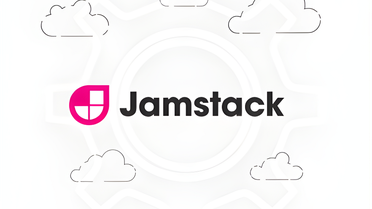Traditional cloud storage models (S3, GCS, Azure Blob) bill you whenever objects leave the region. That billing topology turns global delivery into a recurring tax: origin egress, CDN origin fills, cross-region replication, and inter-service transfers compound into volatile and often dominant line items.
Object Storage on Distributed Infrastructure flips that equation: objects and related transforms live closer to users. The result is structural, not incremental — typical deployments report 30%–80% lower origin and cross-region egress, dramatic origin offload, consolidated delivery and compute, and far more predictable bills.
This article synthesizes representative metrics, two enterprise transformations, and the technical tradeoffs you should evaluate. Read this if you want to stop accepting egress as inevitable and begin redesigning your data topology for global scale and predictable costs.
Why This Matters: The $50B Problem and The Underlying Physics
FinOps teams are good at rightsizing instances and buying commitments. Yet one of the fastest-growing and least-understood cost drivers is data movement. Conservatively, enterprises spend tens of billions annually on avoidable egress, cross-region transfer, and replication charges across public clouds. The issue isn’t poor engineering — it’s topology.
- In a centralized model, a single user request commonly creates multiple billable events:
Client → CDN POP (cache miss) → Origin storage (S3/GCS/Blob) → Origin compute (transforms) → Return path.
Each hop can produce bandwidth charges, cross-service transfer fees, and retransmissions that multiply bytes on the network. Multiply that across millions of requests and dozens of regions and the totals grow large and unpredictable.
Distributed Object Storage changes the physics: store and process objects in the same locations that serve users. Most requests are satisfied locally and never touch the origin. Cache fills, cross-region transfers, and inter-service egress costs drop or disappear.
Quantifiable Impacts: Reported Ranges and What They Depend On
Across multiple enterprise analyses and migrations, the practical benefits fall into repeatable ranges. These are representative ranges — your mileage depends heavily on traffic profile, geographic distribution, object size, cacheability, and read/write mix.
- Egress reduction (origin / cross-region): 30%–80% (higher for globally distributed, read-heavy assets).
- Origin offload: origin read traffic commonly falls from ~70% dependent to 3–10%, enabling smaller read-optimized fleets.
- Replication costs: effectively eliminated for global read availability where the platform provides native distribution (subject to data residency constraints).
- CDN bill reduction: 30%–50% for high-volume static assets due to fewer cache fills and a unified delivery layer.
- Bandwidth efficiency: 10%–20% fewer total bytes transferred by reducing retries, partial downloads, and retransmissions.
- Cost predictability: month-to-month variance commonly drops by 60%–80% in enterprise reports.
These ranges are directional and should be validated via a pilot that measures origin reads, egress GBs, and cache-hit ratios before and after migration.
Real-world Transformation: MadeiraMadeira (LATAM e-commerce)
Background
MadeiraMadeira is the largest online furniture and decor platform in Latin America, serving millions of monthly visitors and operating at a scale where page-load performance, media optimization, and traffic spikes directly impact revenue and cloud spend.
Its legacy CDN relied on only a few POPs, forcing most requests back to the cloud origin and creating unnecessary egress, bandwidth consumption, and load on compute/storage layers.
Observed Issues Before Migration
- Slow page loads and high image payloads impacting conversion.
- Limited geographic coverage, forcing content to originate from centralized cloud regions.
- High origin load and bandwidth costs due to low cache efficiency.
- Increasing cloud provider costs as traffic and catalog size grew.
Distributed Delivery Transformation (phased adoption)
MadeiraMadeira began modernizing its delivery architecture by moving critical workloads to a distributed global infrastructure, implemented through Azion’s platform:
- Distributed caching: adoption of Edge Cache and Tiered Cache to serve content closer to users and offload origin infrastructure.
- Distributed media optimization: Image Processor used to transform and reduce large, high-resolution product photos across regions.
- Traffic and availability control: Load Balancer and edge-native functions used to improve reliability, reduce failover impact and reduce load on centralized origins.
Results
Within months, MadeiraMadeira achieved a material shift in cost structure and performance:
- Cloud provider cost reduction: up to 90% lower data-transfer-related costs due to high cache offload.
- High offload: up to 90% of data served directly from distributed cache layers.
- Image optimization: 80% reduction in file sizes for product photos, dramatically improving load times.
- Performance gains: page-load acceleration across devices and regions, improving user experience at scale.
- Operational benefits: improved availability during traffic spikes and reduced dependency on centralized origin compute.
Why Distributed Storage Win
The benefit is not merely better caching — it’s changing where objects and compute live.
Traditional multi-region pattern
- Central object store (S3/GCS/Blob) in one/few regions.
- CDN in front for caching; origin fills on cache misses.
- Replication pipelines for availability.
- Origin-triggered compute for transforms.
Costs introduced
- Storage → CDN origin fills (egress) and per-GB transfer fees.
- Inter-region replication/transfer charges.
- Cross-service transfer fees (storage ↔ compute).
- Cache stampedes and origin scaling during traffic spikes.
Distributed pattern
- Single upload API distributes objects across global nodes.
- Storage co-located with distributed compute.
- Delivery, caching, and processing unified in one platform.
- Cold regional buckets used for archival (optional).
Benefits
- Cache misses become rare; most requests served locally.
- Replication pipelines disappear where the platform provides global distribution.
- Transforms and optimizations happen near stored objects — no cross-region transfer.
- Single billing surface reduces complexity and month-to-month variance.
Technical flows (concise examples)
Traditional (S3 + CDN):
aws s3 cp asset.jpg s3://my-bucket/assets/asset.jpg --region us-east-1
# CDN request triggers origin fill on first missGET https://cdn.example.com/assets/asset.jpg # CDN -> S3 (egress)Object Storage (upload once, serve locally):
curl -X PUT "https://edge.example.com/v1/storage/assets/asset.jpg" \ -H "Authorization: Bearer $TOKEN" --data-binary @asset.jpg
# Client request served from nearest POP (no origin egress)GET https://edge.example.com/assets/asset.jpgIn more mature distributed architectures, a single client request typically results in just one billable event — the local delivery — instead of the 4–6 events common in traditional models.
Concrete Cost Levers - How Savings Add Up
1) Lower data transfer (egress) by design
- Remove storage → CDN origin fills and cross-region egress.
- Objects served from POPs closest to users, converting global traffic into local delivery.
2) Massive origin offload → smaller cloud footprint
- Reduce read traffic to origin storage and read-optimized instances.
- Fewer autoscaling events, lower CPU/memory/network for origin services.
3) No multi-region replication pipeline
- Upload once → global availability (platform-dependent); no extra storage copies or transfer fees.
- Eliminates replication orchestration, region management, and related operational overhead.
4) Reduced CDN costs (storage + delivery unified)
- Lower cache fills and fewer misses; consolidation of delivery and storage reduces SKUs and vendor fees.
5) Lower latency → fewer retries → less bandwidth
- Shorter network paths reduce packet loss and retransmissions.
- Measurable reductions in total bytes transferred (commonly 10–20%) from fewer retries and partial downloads.
6) Compute offload savings
- Validation, auth, transforms, and personalization run on a distributed infrastructure, closer to users.
- Cuts cross-layer transfer fees and lowers centralized compute spend.
7) Fewer vendors, lower TCO
- One platform for storage, delivery, caching, and distributed compute reduces contracts and billing lines.
- Simpler vendor surface lowers operational overhead for engineering and procurement.
8) Predictable and stable monthly bills
- With fewer cross-service events and less long-distance data movement, month-to-month variance typically drops materially — improving forecasting and reducing FinOps firefighting.
Tradeoffs and Where Centralized Storage Still Belongs
Distributed storage is powerful but not universal. Key tradeoffs and considerations:
- Cold archival and heavy centralized compute (GPU training, large-scale batch jobs, petabyte analytics) still belong in regional clouds for cost-efficiency and integration with managed big-data ecosystems.
- Regulatory constraints: some jurisdictions mandate regional residency or prohibit distribution to certain countries. Verify that the distributed platform provides region-level controls, audit logs, and contractual guarantees.
- Small or low-traffic projects: onboarding complexity or fixed per-location costs can outweigh benefits.
- Write-heavy, strongly consistent, multi-writer transactional workloads: confirm the platform’s consistency, conflict-resolution mechanisms, and write-propagation semantics.
- Cache invalidation and purge policies: ensure you understand purge costs, propagation delays, and cache-control interactions.
- Per-location storage capacity and pricing: distributed vendors may price differently per region; model costs against your traffic geography.
How to Evaluate and Pilot
1) Profile your traffic
- Break down read/write percentages, per-region request volume, and cacheability.
- Identify high-volume assets (images, video chunks, firmware) and dynamic/semi-dynamic content.
2) Quantify origin-fill and egress costs
- Measure origin-read GBs, cross-region transfers, and CDN origin fills for the last 3–6 months.
- Include retry and partial-download overheads where possible.
3) Pick a small, high-impact pilot
- Start with static or semi-dynamic assets (images, JS/CSS, thumbnails).
- Move transforms (image resize/format conversion) to functions running closer to the user.
4) Instrument and compare
- Track origin read reduction, per-GB egress savings, latency, cache hit ratio, and monthly variance.
- Compare autoscaling events, instance counts, and error/retry rates before/after.
5) Validate compliance & operational needs
- Confirm data residency, access control, logging, lifecycle tiering, and SLAs.
- Define archival strategy (e.g., tier to S3/GCS/Azure Blob for cold data where required).
6) Iterate and expand
- Once core storage and transforms run on a distributed infrastructure, add personalization, A/B tests, and other dynamic operations executed closer to the user.
Architecture Over Optimization
Many teams wring savings from centralized architectures by tuning caches, TTLs, or negotiating egress discounts. Those techniques help, but they optimize a costly topology. Storage at the edge — or more precisely, object storage on distributed infrastructure — is an architectural change that alters the economic fundamental: make requests local rather than repeatedly pay to move data across regions.
If your business is globally distributed, read-heavy, and sensitive to variable egress costs, the decision becomes when, not if, to redesign your data topology. Early adopters aren’t just saving money today — they’re building long-term advantages in margin, performance, and speed-to-market.





